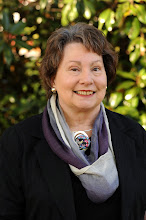Celebrating July 4, 2012 in Old Salem, North Carolina
On July 3, John and I visited Bethabara for the first time. We were overwhelmed with information from the different docents and given an enlightening tour of this first Moravian settlement in North Carolina. Bethabara means House of Passage, and fifteen single men arrived there in 1753. "They all had a deep passion and belief that God would guide them" from Bethlehem, Pennsylvania to their new
wilderness home.By the next spring, more than 15 acres of fields were cleared and planted. Fences and houses were standing. For protection, a palisade was built around the buildings. It took two years to build the grist mill, but only eighteen days to build the palisade. More families followed the original settlers.

The 1788 church has been reconstructed and restored to exhibit the simple, not easy, daily lives of these settlers. Their community life blended with their religion. Whether a person was washing clothes, making shoes, or teaching children about Jesus, it was all done from the heart. The community was like a family with everyone having a job that benefited all.
to be opened with an elbow if hands were full; it still works.
You can see the quill pen and ink well on one side and the bell to bring order from possible chaos in another handy position.
This doll on the child's bed in the master bedroom waits patiently for its owner.
The medicinal herb garden includes those plants that would have been used during the 18th. century; it is a living history exhibit for visitors. Dr. Hans Martin Kalberlahn was the first physician, and he originally planted the garden. Because of his expertise, this settlement became a regional medical center. These plants would be like our prescription drugs today.
Fresh water was necessary, and some of the original wells are evident.
 |
There was a museum of period tools set up in a barn. This fish basket caught my eye. Putting the basket in the running water with some bait takes care of attaching a worm to the hook.
 |
Speakers celebrated the Naturalization Ceremony; there were 60 candidates from 38 different countries. Strong voices were raised as they recited the Oath of Allegiance. The applause from the spectators was deafening as new citizens waved American flags in the air. Like a college graduation ceremony, the new citizens' names were called. They proudly walked to the podium to receive their papers. It was a moving ceremony.
 |
 |
| Emblem of Hunt club |
make about a dozen rifles a year that are used for hunting. Rifles used in the
Revolutionary War battles of Cowpens and Kings Mountain were crafted here.
The huntsman's task in the Old Salem community to bring in fresh meat. The
rifles were made for the hunters.
 |
| Pistol made by Old Salem Gunsmiths |
 |
| Members of 4th of July Band |
 |
| Fire Truck |
 |
| Water Buckets for Fire Truck filled by the women |
On the steps of the tavern at 2:00, we assembled to hear the reading of the Declaration of Independence read. As you can see, the reader was dressed in period costume. Standing in front were men, women, and children attired in modern clothing and in 18th. century clothing, and the significance of this touched my heart. We must pass on to the next generation the importance of our freedom and our gratitude to those that fought in the Revolutionary War.
 |
| Crier for Reading of News |
 |
| Crier Reading the new Declaration of Independence |
 |
| Ancient Silhouette Making machine |
Four women had put needle and thread into designing this quilt. Some crafts need to be passed down.
It choked me up with emotion to hear adult voices floating across that square, and it was with pleasure and joy that John and I joined them.
The band played while we sang, and then the benediction was read from Psalm 29:11. "The Lord will give strength unto His people; the Lord will bless His people, His people with peace." Amen
 |
| History Lessons |
 |
| Knitting Lesson |
 |
| Early Flag |
In the Miksch House, built in 1771, the docent was set up in the small kitchen cooking lunch. Dried herbs hung from the ceiling in cloth bags tied with string to keep the critters out.
 |
| Meal Preparation |
 |
| Food Keeping Vessels |
 |
| Utensils |
 |
| More Food Storage Vessels |
 |
| Potatoes from the garden |
 |
| More storage vessels |
 |
| Cooking on the hearth |
This is the Miksch House from the outside. It was the first single family home built in Salem. Matthew Miksch was trained as a gardner in Europe, and he supported his family in America by growing and selling vegetables and seeds. His wife Marie baked and sold gingerbread. (Maybe she swapped recipes with Winkler's Bakery across the street.)
I wonder what the family would think of their home today.
These three days in and around Winston Salem reminded us once again of the price of freedom. We believe the Moravian motto is worth remembering.
"In essentials, unity
In non essentials, liberty
In all things, Love."
In all things, Love."

























